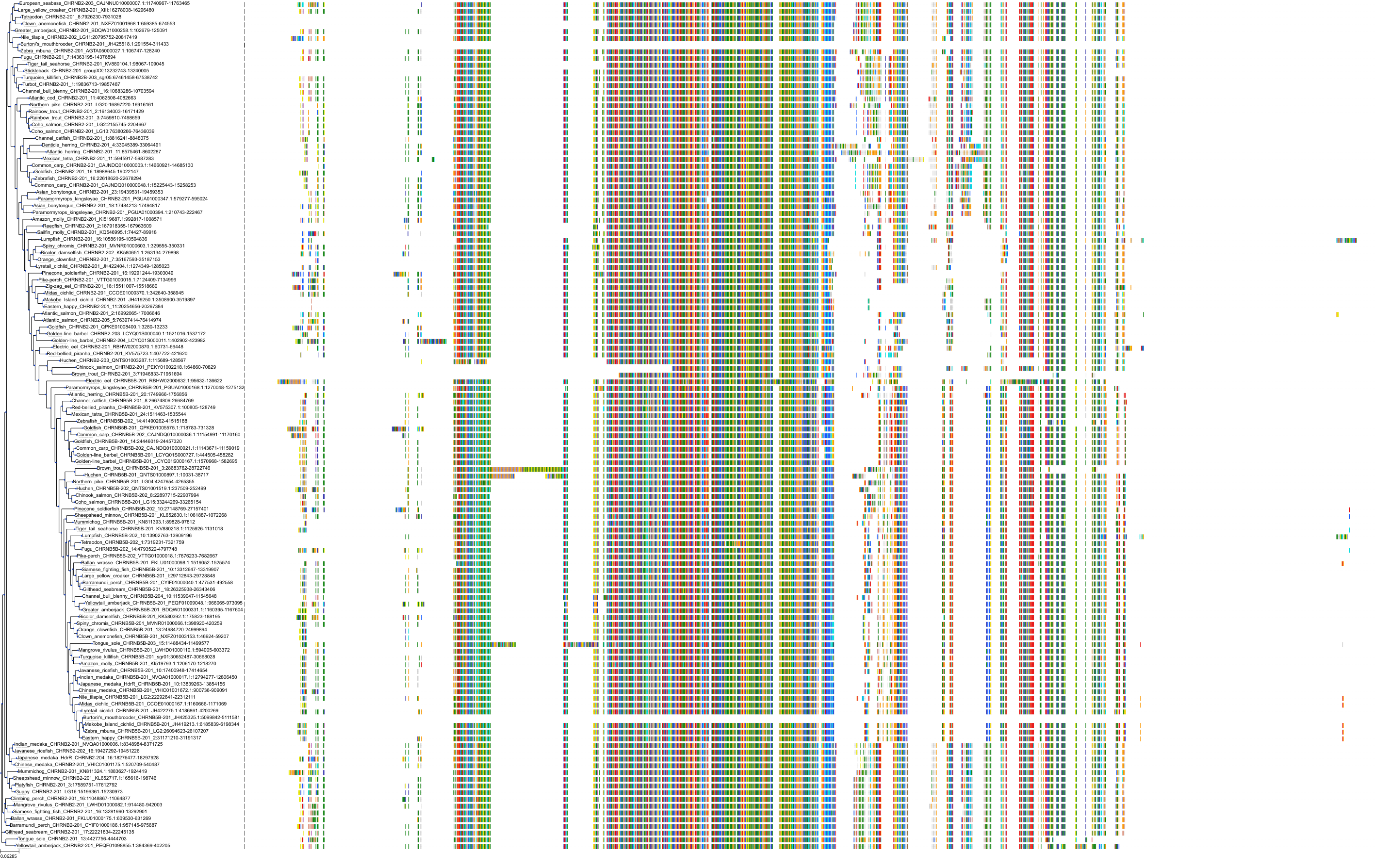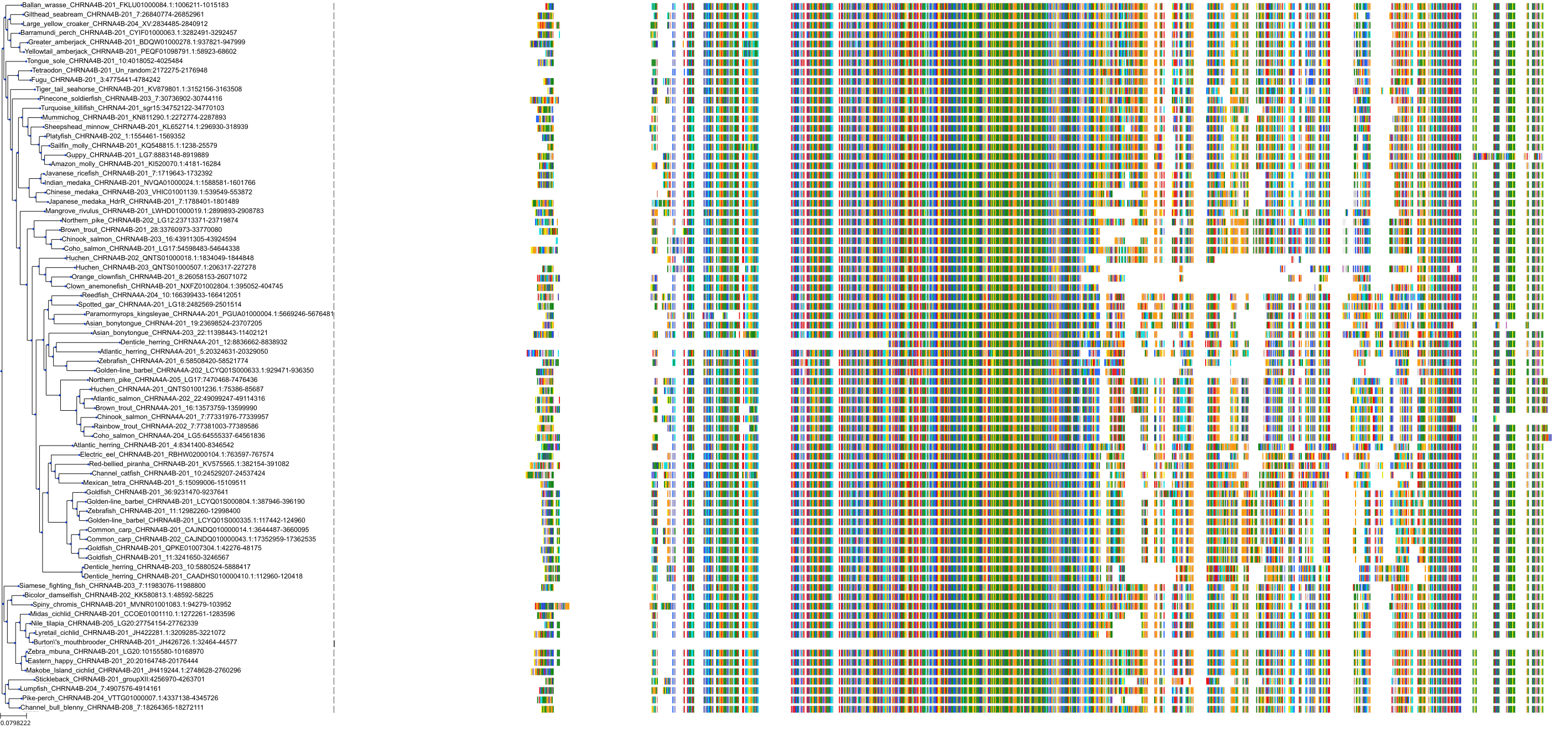|
Binding affinity to rat cortex Nicotinic acetylcholine receptor alpha4-beta2 using [3H]nicotine
|
Rattus norvegicus
|
0.06
nM
|
|
|
Binding affinity for human Nicotinic acetylcholine receptor alpha4-beta2 expressed in HEK 293 cells using [3H]nicotine
|
Homo sapiens
|
0.11
nM
|
|
|
Binding affinity to human Nicotinic acetylcholine receptor alpha4-beta2 expressed in IMR32 cells using [3H]epibatidine
|
Homo sapiens
|
240.0
nM
|
|
|
Binding affinity to human Nicotinic acetylcholine receptor alpha4-beta2 expressed in IMR32 cells using [3H]alpha-bungarotoxin
|
Homo sapiens
|
617.0
nM
|
|
|
Percent inhibition against 10 uM nicotine binding to human Nicotinic acetylcholine receptor alpha4-beta2 expressed in Xenopus oocytes at 10 uM
|
Homo sapiens
|
32.0
%
|
|
|
Displacement of [3H]epibatidine from alpha-4-beta-2 nAChR in rat cerebral cortex
|
Rattus norvegicus
|
0.12
nM
|
|
|
Displacement of [125I]iodoMLA from alpha-7 nAChR in rat cerebral cortex
|
Rattus norvegicus
|
32.5
nM
|
|
|
Displacement of [3H]epibatidine from alpha4beta2 nicotinic receptor expressed in human HEK293 cells
|
None
|
0.295
nM
|
|
|
Displacement of [3H]epibatidine from alpha3beta4 nicotinic receptor expressed in human HEK293 cells
|
None
|
74.7
nM
|
|
|
Displacement of [3H]epibatidine from alpha6/4beta4 nicotinic receptor expressed in human HEK293 cells
|
None
|
89.0
nM
|
|
|
Displacement of [3H]epibatidine from alpha7 nicotinic receptor expressed in human HEK293 cells
|
None
|
125.0
nM
|
|
|
Agonist activity at rat alpha6beta2 nAChR assessed as [3H]dopamine release by beta counting
|
Rattus norvegicus
|
46.0
nM
|
|
|
Agonist activity at rat alpha4beta2 nAChR assessed as [3H]dopamine release by beta counting
|
Rattus norvegicus
|
46.0
nM
|
|
|
Partial agonist activity at alpha4beta 2 nAChR
|
Homo sapiens
|
0.06
nM
|
|
|
Binding affinity to rat alpha7 nACHR at 10 uM
|
Rattus norvegicus
|
125.0
nM
|
|
|
Antagonist activity at rat alpha4beta2 nAChR expressed in Xenopus laevis oocytes assessed as inhibition of acetylcholine-induced response at 100 uM after 2 to 6 days by two electrode voltage clamp assay
|
Rattus norvegicus
|
38.0
%
|
|
|
Displacement of [125I]iodoMLA from rat cerebral cortex alpha7 nAChR at 50 nM incubated for 2 hrs by microplate scintillation assay
|
Rattus norvegicus
|
32.5
nM
|
|
|
Displacement of [3H]epibatidine from rat cerebral cortex alpha4beta2* nAChR incubated for 4 hrs by liquid scintillation assay
|
Rattus norvegicus
|
0.12
nM
|
|
|
Inhibition of human liver OATP1B1 expressed in HEK293 Flp-In cells assessed as reduction in E17-betaG uptake at 20 uM by scintillation counting
|
Homo sapiens
|
24.7
%
|
|
|
Inhibition of human liver OATP1B3 expressed in HEK293 Flp-In cells assessed as reduction in [3H]E17-betaG uptake at 20 uM incubated for 5 mins by scintillation counting
|
Homo sapiens
|
0.8
%
|
|
|
Inhibition of human liver OATP2B1 expressed in HEK293 Flp-In cells assessed as reduction in [3H]E3S uptake at 20 uM incubated for 5 mins by scintillation counting
|
Homo sapiens
|
27.3
%
|
|
|
Displacement of [3H]epibatidine from rat alpha3beta4 nACHR
|
Rattus norvegicus
|
86.0
nM
|
|
|
Displacement of [3H]epibatidine from rat alpha4beta2 nACHR
|
Rattus norvegicus
|
0.05
nM
|
|
|
Displacement of [3H]epibatidine from rat alpha4beta4 nACHR
|
Rattus norvegicus
|
110.0
nM
|
|
|
Inhibition of human alpha4beta2 nACHR expressed in SH-EP1 cells by 86Rb+ efflux assay
|
Homo sapiens
|
110.0
nM
|
|
|
Binding affinity to rat alpha7 nAChR expressed in Xenopus laevis oocytes
|
Rattus norvegicus
|
300.0
nM
|
|
|
Antagonist activity at human alpha4beta2 nAChR expressed in human SH-EP1 cells assessed as inhibition of 86Rb+ efflux preincubated for 10 mins by liquid scintillation counting
|
Homo sapiens
|
38.9
nM
|
|
Antagonist activity at human alpha4beta2 nAChR expressed in human SH-EP1 cells assessed as inhibition of 86Rb+ efflux preincubated for 10 mins by liquid scintillation counting
|
Homo sapiens
|
39.0
nM
|
|
|
Binding affinity to alpha4beta4 nAChR
|
None
|
110.0
nM
|
|
|
Binding affinity to alpha4beta2 nAChR
|
None
|
0.4
nM
|
|
|
Binding affinity to alpha3beta4 nAChR
|
None
|
86.0
nM
|
|
|
Binding affinity to alpha4beta2 nAChR in rat cortex
|
Rattus norvegicus
|
0.06
nM
|
|
|
Desensitization of human alpha4beta2 nACHR expressed in HEK293 cells assessed as inhibition of 86Rb+ efflux preincubated for 10 mins measured after 2 hrs by liquid scintillation counting analysis
|
Homo sapiens
|
94.0
nM
|
|
|
Agonist activity at human alpha4beta2 nACHR expressed in HEK293 cells assessed as stimulation of 86Rb+ efflux after 2 hrs by liquid scintillation counting analysis
|
Homo sapiens
|
950.0
nM
|
|
|
Displacement of [3H]-Epibatidine from rat alpha7 nACHR expressed in HEK293 cell membranes by liquid scintillation counting analysis
|
Rattus norvegicus
|
37.0
nM
|
|
|
Displacement of [3H]-Epibatidine from rat alpha4beta4 nACHR expressed in HEK293 cell membranes by liquid scintillation counting analysis
|
Rattus norvegicus
|
28.0
nM
|
|
|
Displacement of [3H]-Epibatidine from rat alpha4beta2 nACHR expressed in HEK293 cell membranes by liquid scintillation counting analysis
|
Rattus norvegicus
|
0.12
nM
|
|
|
Displacement of [3H]-Epibatidine from rat alpha3beta4 nACHR expressed in HEK293 cell membranes by liquid scintillation counting analysis
|
Rattus norvegicus
|
390.0
nM
|
|
|
Displacement of [3H]-Epibatidine from rat alpha3beta2 nACHR expressed in HEK293 cell membranes by liquid scintillation counting analysis
|
Rattus norvegicus
|
2.5
nM
|
|
|
Displacement of [3H]-Epibatidine from rat alpha2beta4 nACHR expressed in HEK293 cell membranes by liquid scintillation counting analysis
|
Rattus norvegicus
|
94.0
nM
|
|
|
Displacement of [3H]-Epibatidine from rat alpha2beta2 nACHR expressed in HEK293 cell membranes by liquid scintillation counting analysis
|
Rattus norvegicus
|
0.48
nM
|
|
|
Antagonist activity at human alpha4beta2 nAChR assessed as inhibition of nicotine-induced [86Rb+] efflux preincubated for 10 mins before nicotine exposure by cell-based liquid scintillation counting
|
Homo sapiens
|
94.0
nM
|
|
|
Agonist activity at human alpha4beta2 nAChR assessed as stimulation of [86Rb+] efflux after 2 mins by cell-based liquid scintillation counting
|
Homo sapiens
|
950.0
nM
|
|
|
Displacement of [3H]epibatidine from nAChR in rat forebrain
|
Rattus norvegicus
|
0.71
nM
|
|
|
Displacement of [3H]epibatidine from rat alpha7 nAChR expressed in HEK293 cells after 4 hrs
|
Rattus norvegicus
|
62.0
nM
|
|
|
Displacement of [3H]epibatidine from rat alpha4beta4 nAChR expressed in HEK293 cells after 4 hrs
|
Rattus norvegicus
|
15.0
nM
|
|
|
Displacement of [3H]epibatidine from human alpha4beta2 nAChR after 4 hrs by cell-based assay
|
Homo sapiens
|
0.13
nM
|
|
|
Displacement of [3H]epibatidine from rat alpha3beta4 nAChR expressed in HEK293 cells after 4 hrs
|
Rattus norvegicus
|
460.0
nM
|
|
|
Displacement of [3H]epibatidine from rat alpha3beta2 nAChR expressed in HEK293 cells after 4 hrs
|
Rattus norvegicus
|
1.9
nM
|
|
|
Displacement of [3H]epibatidine from rat alpha2beta4 nAChR expressed in HEK293 cells after 4 hrs
|
Rattus norvegicus
|
71.0
nM
|
|
|
Displacement of [3H]epibatidine from rat alpha2beta2 nAChR expressed in HEK293 cells after 4 hrs
|
Rattus norvegicus
|
0.22
nM
|
|
|
Antagonist activity at rat alpha4beta2 nAChR expressed in Xenopus laevis oocytes assessed as inhibition of acetylcholine-induced current by two-electrode voltage clamp electrophysiological analysis
|
Rattus norvegicus
|
200.0
nM
|
|
|
Displacement of [3H]-epibatidine from alpha4beta2* nAChR in Sprague-Dawley rat cerebral cortex after 4 hrs by liquid scintillation counting analysis
|
Rattus norvegicus
|
0.12
nM
|
|
|
Displacement of [3H]epibatidine from rat forebrain alpha3beta4 nAChR by competition binding assay
|
Rattus norvegicus
|
86.0
nM
|
|
|
Displacement of [3H]epibatidine from rat forebrain alpha4beta2 nAChR by competition binding assay
|
Rattus norvegicus
|
0.4
nM
|
|
|
Displacement of [3H]epibatidine from rat forebrain alpha4beta4 nAChR by competition binding assay
|
Rattus norvegicus
|
110.0
nM
|
|
|
Inactivation of alpha4beta2* nAChR high affinity site (unknown origin) expressed in xenopus oocytes by electrophysiology method
|
Homo sapiens
|
70.0
nM
|
|
|
Agonist activity at alpha4beta2* nAChR (unknown origin)
|
Homo sapiens
|
0.4
nM
|
|
|
Agonist activity at human alpha4beta2 nAChR expressed in xenopus oocytes by electrophysiology method
|
Homo sapiens
|
2.3
nM
|
|
|
Displacement of [3H]-epibatidine from alpha4beta2 nAChR in rat cerebral cortex homogenates after 4 hrs by liquid scintillation counting
|
Rattus norvegicus
|
0.12
nM
|
|
|
Antagonist activity at rat alpha4beta2 nAChR expressed in Xenopus laevis oocytes assessed as inhibition of acetylcholine-induced mean current response by measuring remaining current at 100 uM by two-electrode voltage clamp electrophysiology assay relative to control
|
Rattus norvegicus
|
38.0
%
|
|
|
Antagonist activity at rat alpha4beta2 nAChR expressed in Xenopus laevis oocytes assessed as inhibition of acetylcholine-induced mean current response by two-electrode voltage clamp electrophysiology assay
|
Rattus norvegicus
|
200.0
nM
|
|
|
SARS-CoV-2 3CL-Pro protease inhibition percentage at 20µM by FRET kind of response from peptide substrate
|
Severe acute respiratory syndrome coronavirus 2
|
22.78
%
|
|
|
Antiviral activity determined as inhibition of SARS-CoV-2 induced cytotoxicity of VERO-6 cells at 10 uM after 48 hours exposure to 0.01 MOI SARS CoV-2 virus by high content imaging
|
Chlorocebus sabaeus
|
-0.17
%
|
|
Antiviral activity determined as inhibition of SARS-CoV-2 induced cytotoxicity of VERO-6 cells at 10 uM after 48 hours exposure to 0.01 MOI SARS CoV-2 virus by high content imaging
|
Chlorocebus sabaeus
|
-0.17
%
|
|



















